Landscaping for Nesting Birds
Nesting success is often related to the quality of habitat within a bird’s territory. Habitat quality is the ability of the environment to provide the appropriate resources, such as food and shelter, to enable individual and population survival. Generally speaking, the higher the habitat quality is in your backyard, farm, or local park, the better these places will be able to support nesting birds. NestWatchers can help increase the number of birds nesting and young fledging by making bird-friendly improvements to the landscape!
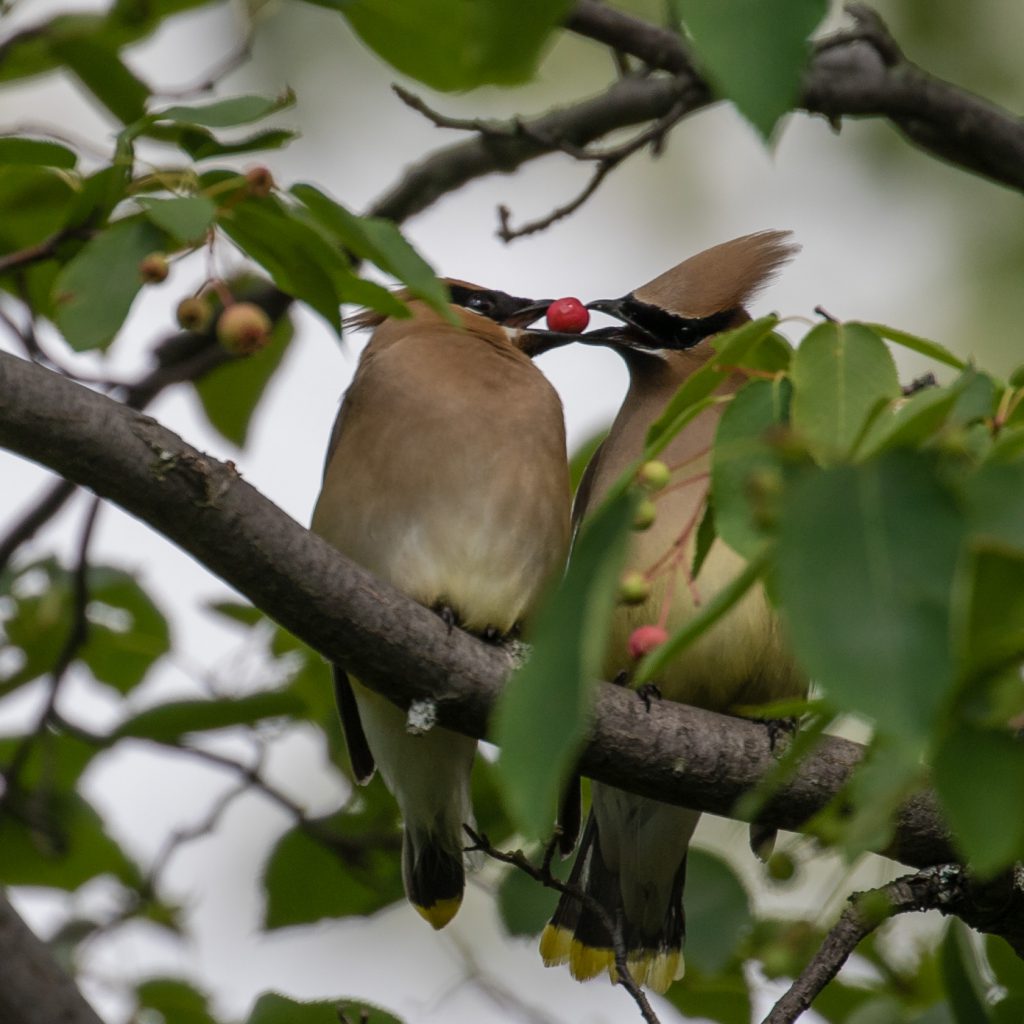
Cedar Waxwings Sharing A Serviceberry
Some bird-friendly improvements include:
- Reducing the amount of space covered by mowed lawn in favor of native shrubs and trees
- Installing a native lawn to replace traditional turf
- Practicing nest-friendly mowing (see below)
- Planting multiple layers of structure throughout your property (e.g., tall trees, medium shrubs, and short grasses/ wildflowers)
- Incorporating appropriate plants to attract nesting birds in your area
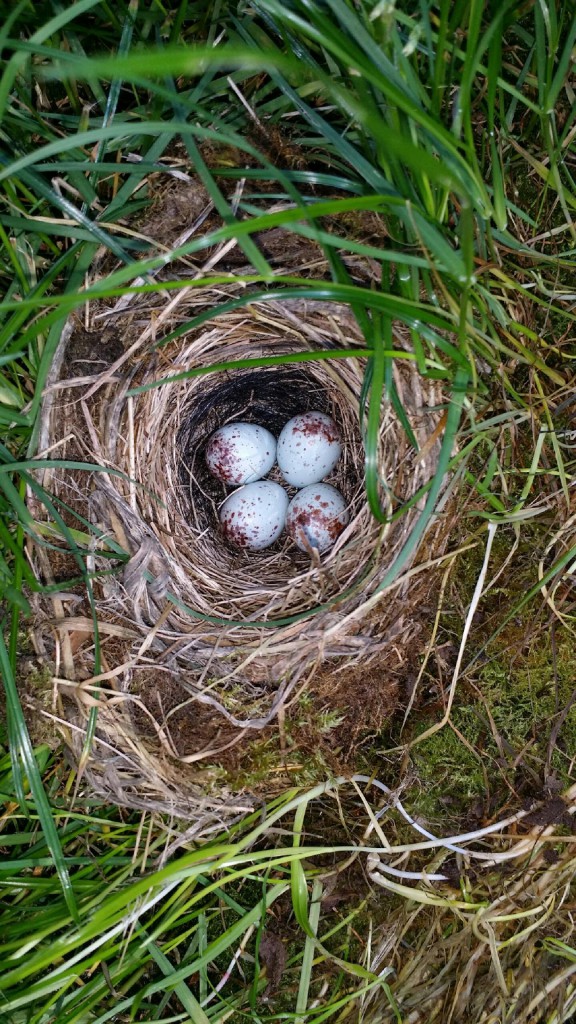
Dark-eyed Junco Nest
- Using fewer helper chemicals, such as pesticides and fertilizers
- Providing a constant source of fresh clean water for birds
- Avoid creating ecological traps
- Installing nest boxes for the birds in your area
Using native plants in your garden instead of ornamentals can help encourage diversity in your yard. Seed- and berry-producing plants are great choices. Flowers and shrubs that are native to your area encourage native insects, which are especially critical for birds during the breeding season; most songbirds feed insects to their young almost exclusively.
It’s also a great strategy to leave your garden and yard a bit “messy” in the fall. Insects and arthropods overwinter in plant stalks and under fallen leaves, which makes for great foraging ground for wrens, towhees, sparrows, and more. Refrain from raking your yard and from tidying up gardens for the winter to help increase the biodiversity of your yard.
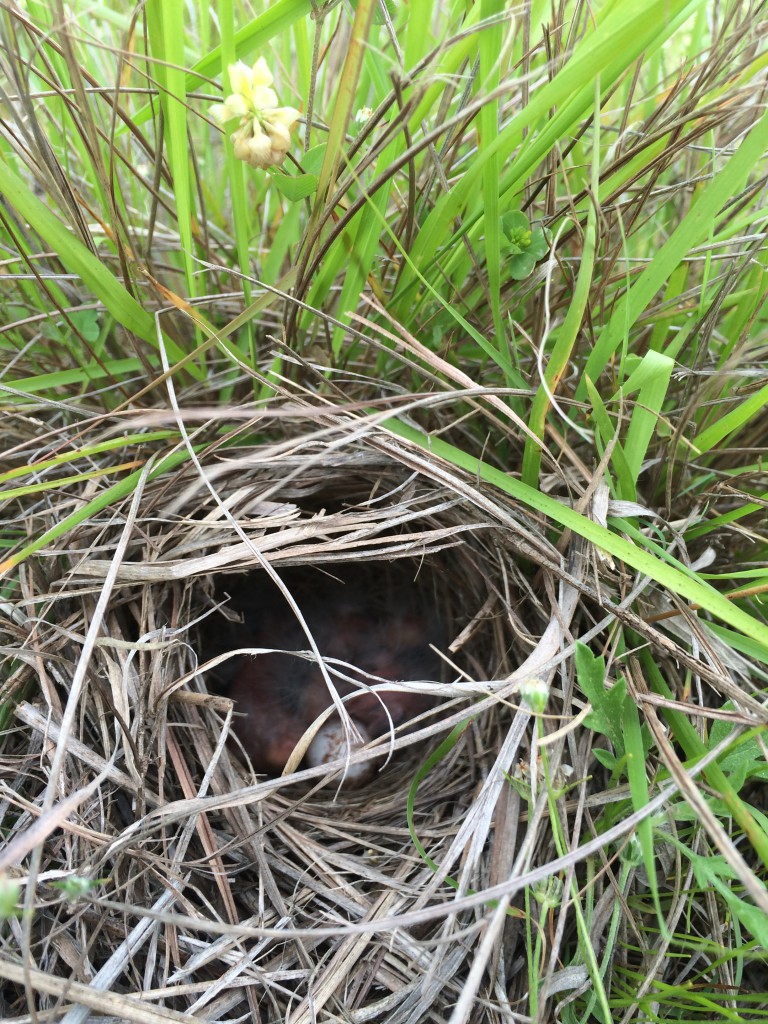
Field Sparrow Nest
Nest-friendly mowing practices involve timing things just right. If you mow too often, the grass will be too short, won’t go to seed, and otherwise won’t support much in the way of insects or other food sources for birds. However, if you are going to mow your lawn, it’s important to keep to a regular schedule since many birds, like juncos and sparrows, are ground nesters (see sparrow nest, left). Going more than a couple of weeks between mowing gives these birds time to build a nest in the tall grass, lay eggs, and perhaps even hatch young before the next mowing day, at which point the nest would be in danger. If your grass gets a bit too long before your next mowing day, it is a good idea to carefully search through your yard for nests before firing the mower up. If you do find a nest, give it a wide berth and don’t mow near the nest until you’re sure the young have fledged.
Check out the Cornell Lab’s Seven Simple Actions to Help Birds for more tips.
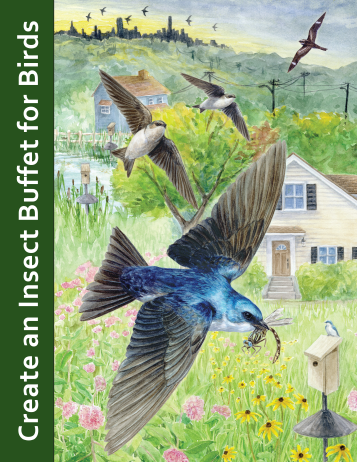
Insects are critical for most songbirds and their nestlings during the breeding season, and many birds depend primarily upon them as prey items. Fostering a healthy, diverse insect population and maintaining preferred nesting structures will ensure your birds have plenty of resources to live and raise their young. Download our informative short guide to learn how you can make your backyard more inviting to insect-loving birds.
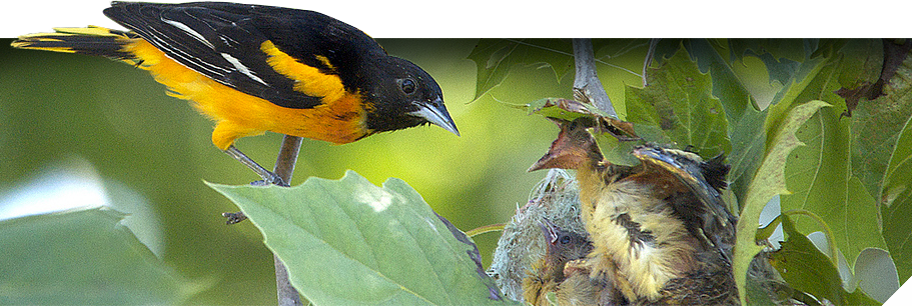 Photo ©
Photo ©